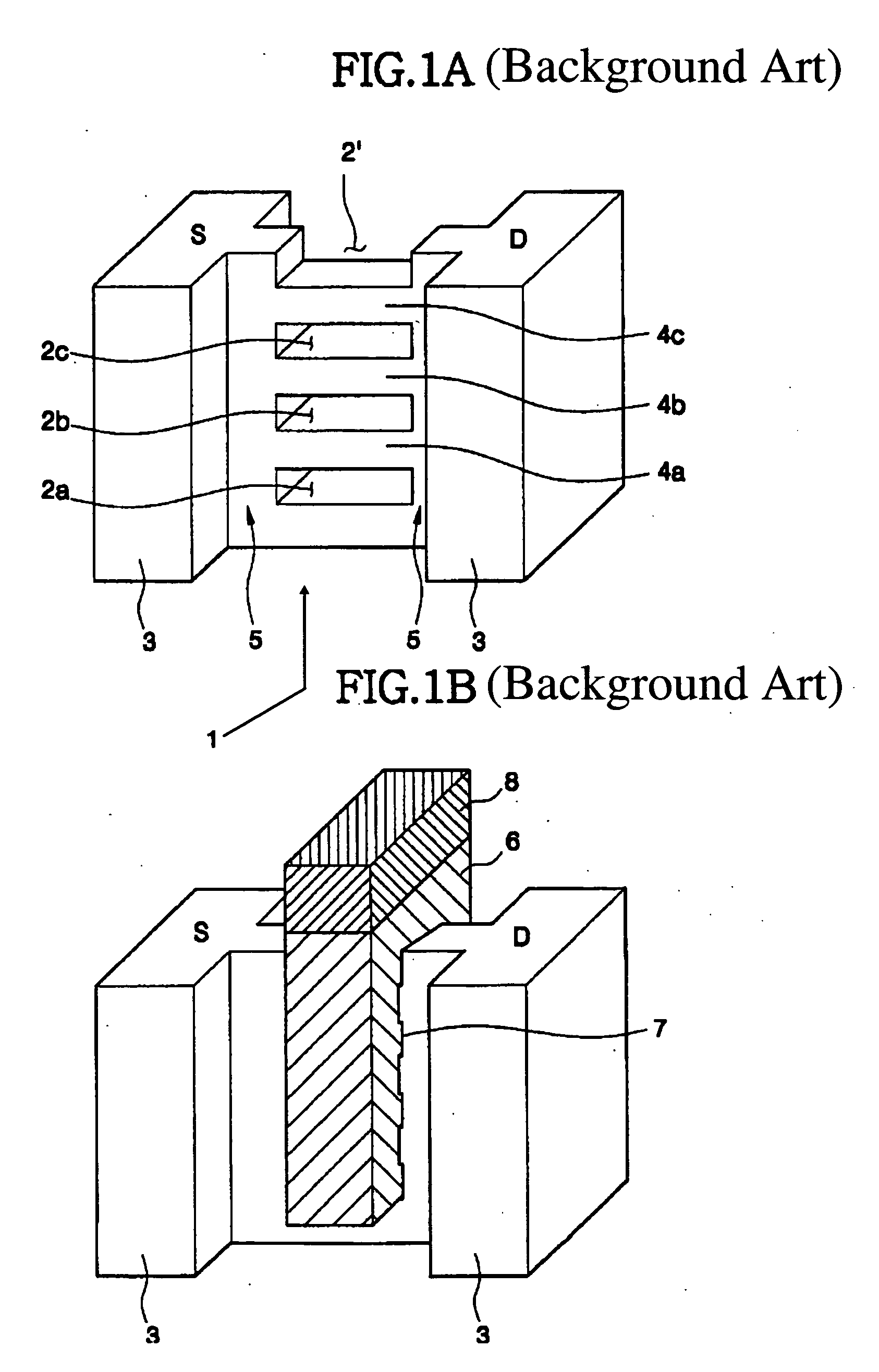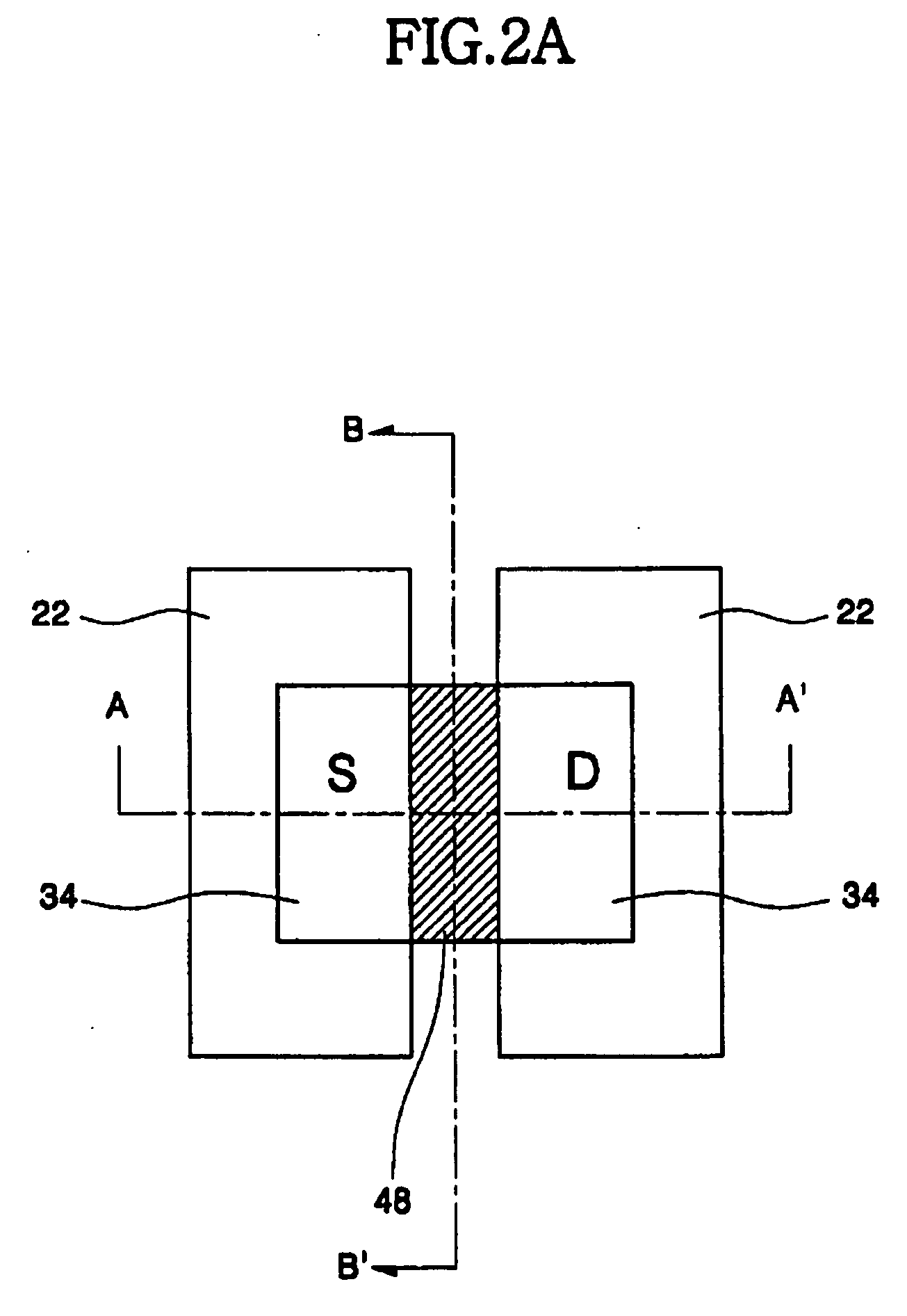PAA- based etchant, methods of using same, and resultant structures
a technology of etchants and etchants, applied in the field of etchants based on etchants, methods of using same, and resultant structures, can solve the problems of short channel effects, problems created, and the need to reduce transistor siz
- Summary
- Abstract
- Description
- Claims
- Application Information
AI Technical Summary
Benefits of technology
Problems solved by technology
Method used
Image
Examples
Embodiment Construction
[0032] This section of the present application makes mention of FIGS. 1A-1B, 2A-2C, 3A-3R, 4A 4G, 5, 6A-6C, 7A-7L and 8, but they are not discussed in that order. Rather, they are discussed in the order 1A, 5, 6A-6C, 1B, 2A-2C, 3A-3R, 4A-4G, and 8.
[0033] In developing the present invention, the following problems with the Background Art were recognized and a path to a solution identified.
[0034] As noted, to obtain the arrangement of bridges 4a, 4b and 4c and tunnels 2a, 2b and 2c in Background Art FIG. 1A, the precursor to bridge-region 1 of the active pattern is etched with an etchant that is selective to SiGe over Si. The Background Art used one of four different etchant compositions: a first mixture of hydrofluoric acid (HF), nitric acid (HNO3) and water (H2O); a second mixture of hydrofluoric acid (HF), hydrogen peroxide (H2O2) and water (H2O); a third mixture of ammonium hydroxide (NH4OH), H2O2 and H2O; a fourth mixture of HF, HNO3, acetic acid (CH3COOH) and deionized H2O (DI...
PUM
| Property | Measurement | Unit |
|---|---|---|
| etch rate ratio | aaaaa | aaaaa |
| conductive | aaaaa | aaaaa |
| doping concentration | aaaaa | aaaaa |
Abstract
Description
Claims
Application Information
 Login to View More
Login to View More - R&D
- Intellectual Property
- Life Sciences
- Materials
- Tech Scout
- Unparalleled Data Quality
- Higher Quality Content
- 60% Fewer Hallucinations
Browse by: Latest US Patents, China's latest patents, Technical Efficacy Thesaurus, Application Domain, Technology Topic, Popular Technical Reports.
© 2025 PatSnap. All rights reserved.Legal|Privacy policy|Modern Slavery Act Transparency Statement|Sitemap|About US| Contact US: help@patsnap.com



